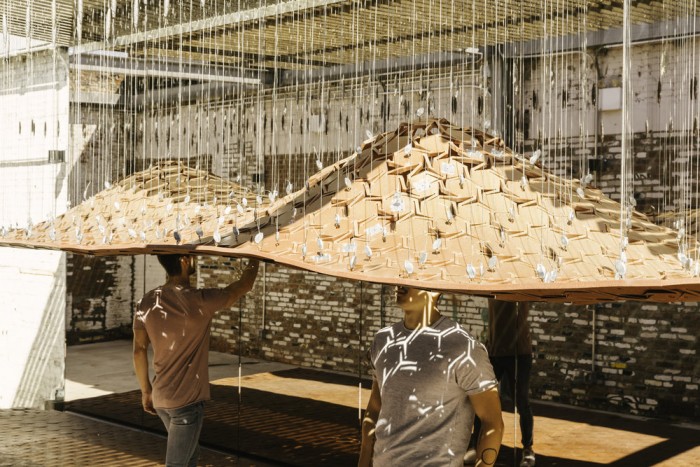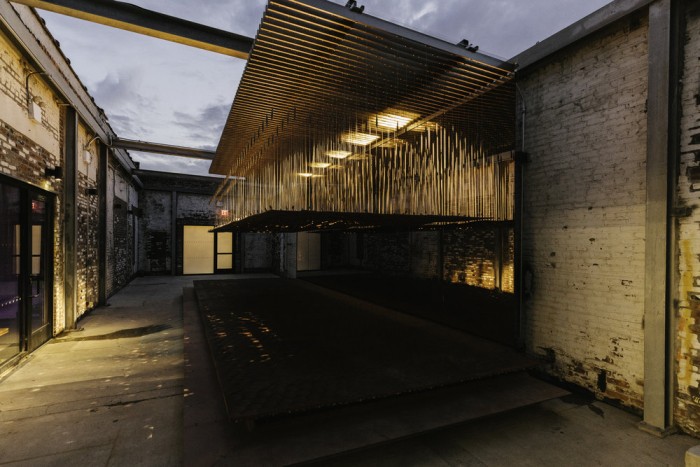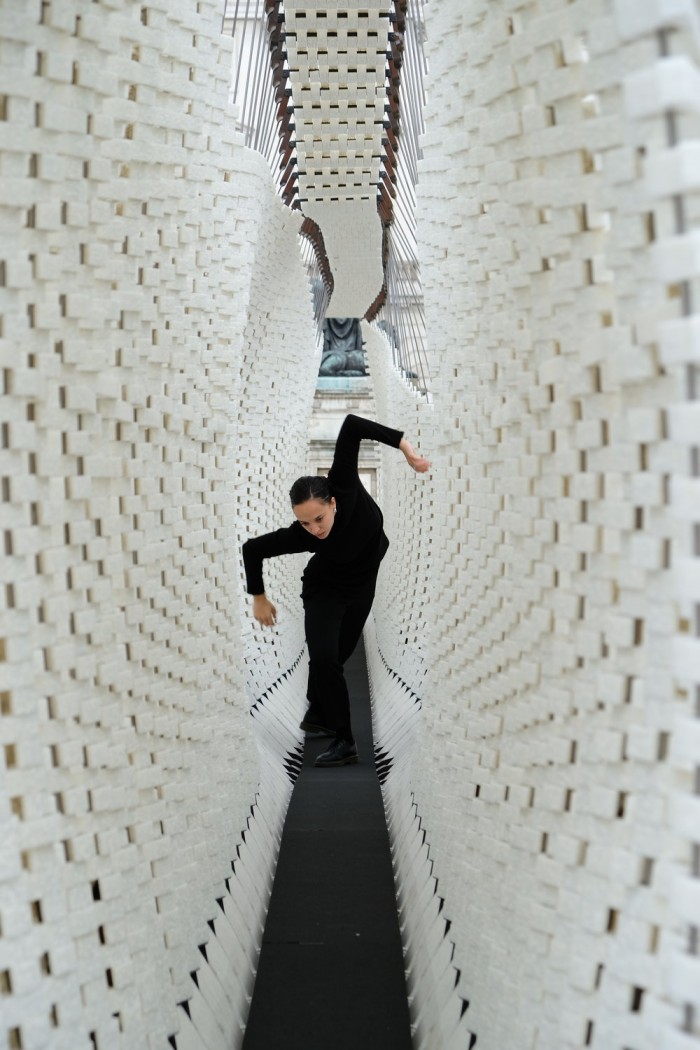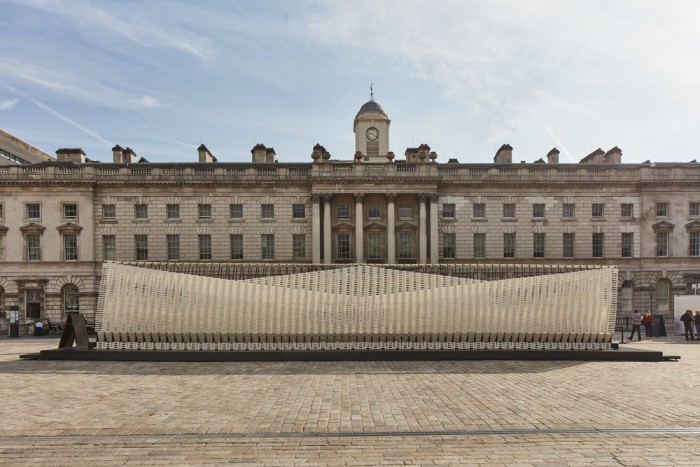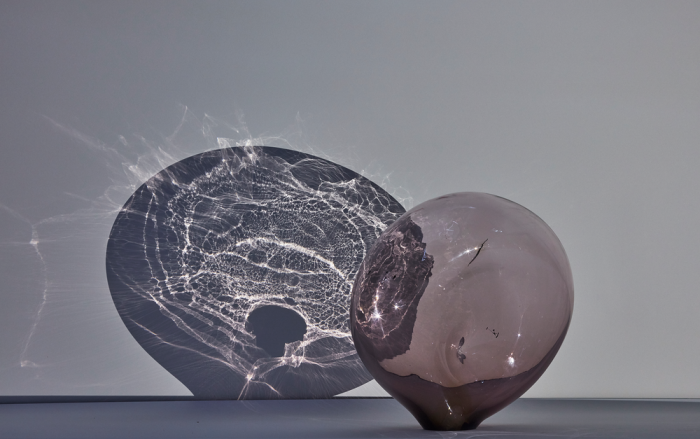Moving away from architectural norms is what Greek designer and engineer Nassia Inglessis has been devoting herself to. Her design studio called INI has been innovating in developing new platforms of material and structural logic since its start in 2014.
At the centre of Inglessis work is the creation of interactive installations which feature a key aspect of the studio’s process called augmented materiality. She uses this process to address the need for transformation in the design world.
“In designing systems that can range from an element to architecture, we seek to explore new portals of perception as evoked by material ‘lenses’ that construct them. In this way, we attempt to step away from digital augmentations, to material augmentations in systems that are symbiotic or enhancing to human activity,” explains Inglessis.
(Photo credit: Luke Walker)
Inglessis originally studied in Engineering at Oxford University (MEng Hons) and trained in art and design at The Royal College of Art and the MIT Media Lab.
"Our motivation is to design at the forefront of science and engage by means of art, across the working themes of matter, mind and nature,” she says.
Urban Imprint is the latest project from Studio INI. It showcases how exactly they’ve introduced augmented materiality into their new wave of Urbanism. The project was previewed at NYCxDesign in Brooklyn and was an interactive installation that allowed visitors to reshape their physical parameters with their own movement.
(Photo credit: Luke Walker)
“URBAN IMPRINT is how we design a piece of this new urbanism, augmented materiality, as we define it. An environment that is a ‘blank canvas’ to be reshaped by the future self,” she says.
“We construct this canvas by using the most static fabric of our urban environment - concrete and glass - yet allow it to be actuated by human presence, and design it to respond to motion and action.”
(Photo credit: Ed Reeve, Dancer Dickson)
Another project called ΑΝΥΠΑΚΟΗ / Disobedience is a 17m long kinetic wall that challenges our perception of architecture as something static, or emotionally inert. It was first showcased in 2018 at the London Design Biennale.
The structure is made up of a steel-spring skeleton and an innovative ‘weave’ of recycled plastic. It asks the questions: How often can one shift tonnes of metal by their physical presence? How often can one dissolve a wall to create new space?
In this Inglessis wanted to evoke disobedience’s creative expression and she invited visitors to feel empowered as they broke reality outside of the computer screen, and re-constructed their physical space.
(Photo credit: Ed Reeve)
‘IN NEED OF TRANSFORMATION’ is a project launched by Inglessis in 2017 at the Victoria & Albert Museum as part of the London Design Festival. The installation involved the display of glass blown pieces made through a fusion of craft and digital automation processes.
This project used blown out glass to form, deform and reform through digital pneumatic pulsation cycles and manual interventions.
“We tried a new algorithm-based system that correlates direct handling of the glass, with the automation of air pressure and suction. In this way we recast the role of the hand in the process of forming glass,” she explains.
In her work, Nassia often collaborates scientists and researchers across disciplines in academia. In 2016-2017 she was a visiting researcher of the Mediated Matter Group working with Professor Neri Oxman in the MIT Media Lab. Oxman was also a Design Indaba speaker in 2018.
Read more:
Design Indaba announces 2020 dates
Ghanaian artist Ibrahim Mahama on the optimism in our failure

